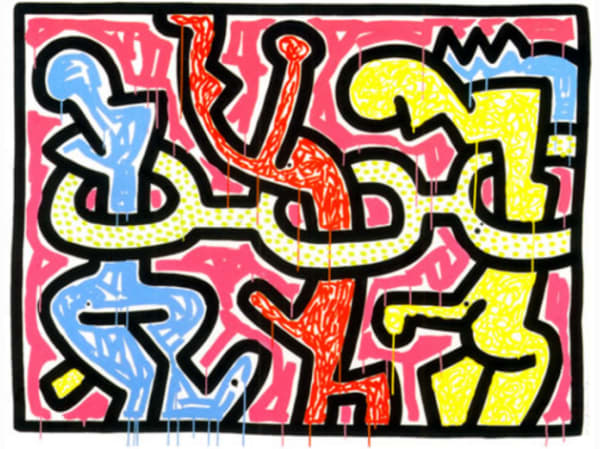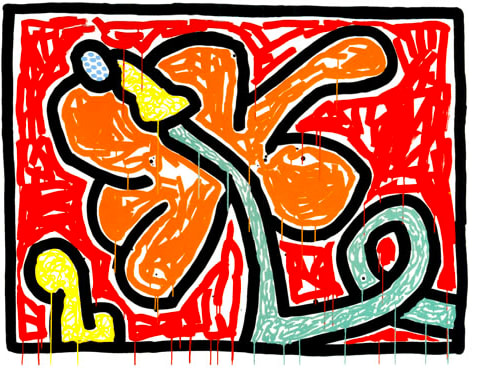
Keith Haring
91.4 x 127 cm (each)
Completed just months before Keith Haring’s untimely death in 1990, the Flowers series (Littman p.165-167) stands as a powerful and vibrant testament to his enduring creative spirit. Rendered in his iconic pop-graffiti style, the five prints depict fluid, phallic plant forms that evoke themes of growth and regeneration. Yet unlike much of his earlier work, these images possess a raw, painterly intensity—imbued with emotional depth and expressive urgency.
This visceral quality is a clear nod to the influence of Abstract Expressionists such as Jackson Pollock and Willem de Kooning. In the Flower) series (Littman p.165-167, screen print inks are allowed to drip and streak across the paper, creating vibrant splatters and trails that contrast with Haring’s bold, graphic outlines. The result is a fusion of spontaneity and control, public and personal—a balance Haring often explored, particularly under the influence of his close friend Jean-Michel Basquiat. Like Basquiat, Haring merged high art and street culture to create work that was accessible, immediate, and deeply resonant.
The final years of Haring’s career were marked by the HIV/AIDS epidemic that ravaged New York’s gay community. Diagnosed with AIDS in 1988, Haring responded with an outpouring of work—driven by urgency, mortality, and purpose. The Flowers portfolio (Littman p.165-167) reflects this creative momentum. As artist Karey Maurice, a close friend of Haring, once recalled: “He showed me through sickness you still have to work and produce and give to the world what you intended to do.”
The gestural marks and flowing lines of the series do more than express movement—they convey a physical and emotional intensity that mirrors Haring’s personal struggle. The Flowers are not merely symbolic of life and beauty; they also carry the weight of suffering, resilience, and the artist’s unwavering commitment to creation until the very end.




